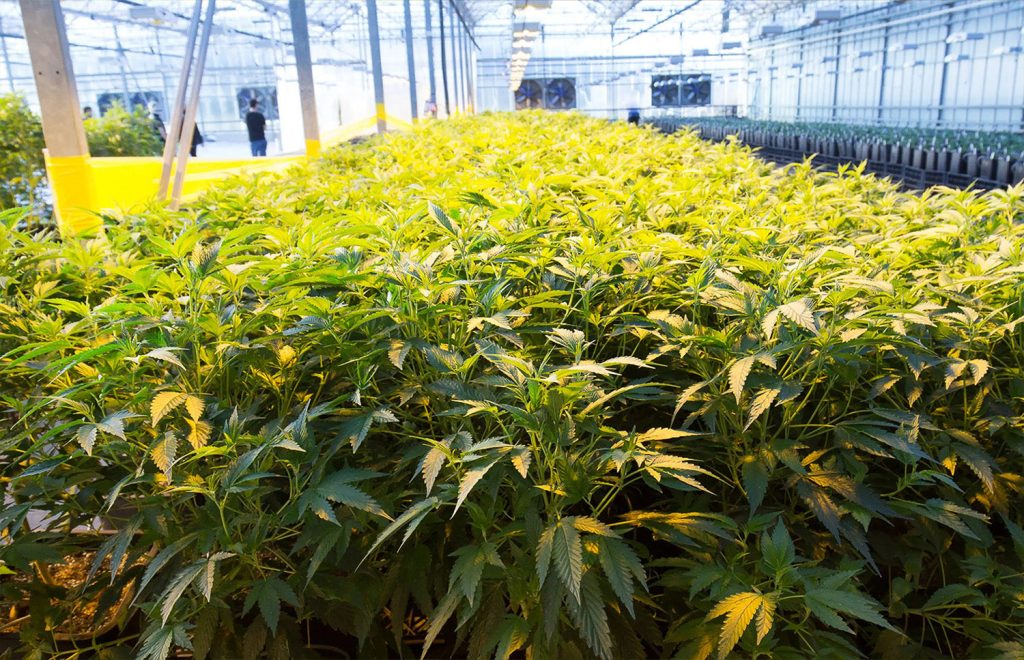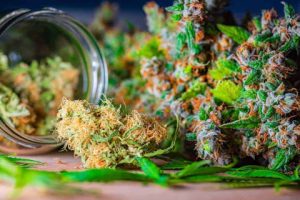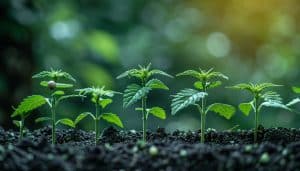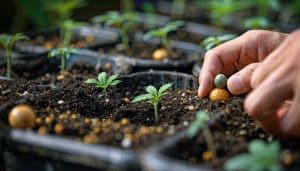- A high level of hygrometry (high humidity), accompanied by certain ambient parameters (high temperature, light, lack of air renewal) represents a combination that can facilitate the presence of fungi which are harmful to the cultivation of cannabis.
- Fungi most often appear without warning on your cannabis plants, they grow quickly and can significantly affect your harvest by causing various problems, if we cannot eliminate them in time.
- It is necessary to exercise great vigilance, because the first symptoms are often hidden either in the underground part at the level of the roots, or within a canopy where the density of leaves is too high, or even on the heads scattered on the different parts of the plant. It is important to know how to identify the fungus that is attacking our crops, but also and above all to apply the right treatment at the right time. Follow the leader !
First of all, it is good to know that the appearance of harmful fungi is not the result of chance, it can most often be avoided by applying certain preventive measures mentioned below:
The cleanliness of the indoor growing area is fundamental in order to avoid any undesirable appearance of possible pathogenic fungi. This is why we recommend carrying out an exhaustive cleaning of your cultivation space (floor, walls and ceiling), between each cycle, but also of all the tools and equipment used, which are in direct contact of your plants.
To do this, you can use either bleach with a concentration of 5%, or using fungicides with a suitable dilution. During cultivation, make sure to keep the space clean. To avoid potential contamination from outside, you can change your clothing to avoid contamination through spores from an outdoor location.

Concerning crops grown outdoors, it is much more complicated to manage this part, however, if you clean your tools effectively, it will help to drastically reduce this phenomenon.
Above all, it is necessary to remove and throw away both dead leaves and plant waste, because they constitute an ideal support for the growth and development of these fungi.
Be sure to always maintain climatic conditions (air humidity and temperature) favorable to the good development of each stage of the crop, whether for growth or for flowering. This type of fungus manages to develop when the ambient conditions are favorable for them, that is to say when the temperature and humidity of the air are high, and the air renewal is insufficient. If you have the appropriate climatic devices, so that your crop is well ventilated, the air humidity is close to 50 has 55% during flowering and the temperature of your space is between 23 And 26°C, then you have no reason to worry.
For the exterior, the fundamental aspect stands first in the choice of your seeds of the best quality in the face of this type of problem. To put it simply, if you live in a geographical region that demonstrates high rainfall as well as an early drop in temperatures, you will then need to carefully select the variety(s) to cultivate, whose flowering period should be short, to avoid the possible attack of a fungus and give your harvest every chance of succeeding.
In case you are working using clones, then it is crucial to ensure that they come from a healthy mother plant. Otherwise, all the work carried out during the preliminary preparation phase will be reduced to nothing, with the possibility of seeing the appearance of certain fungal problems in the short term.
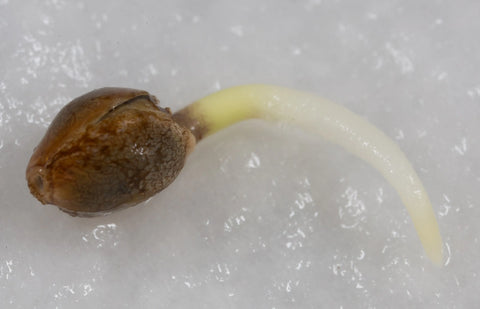
By following this short guide to basic rules, you significantly reduce the conditions for their appearance. As they come from very volatile spores which can lodge and develop in very small places, we cannot guarantee their total eradication in absolute terms.
The most important thing is to know how to detect their presence early enough within the crop, so that their impact is as light as possible on each cannabis plant, managing to eliminate them as quickly as possible to ultimately avoid accumulation. problems that would be more serious for the future of our beloved harvest.
Below you will find out which mushrooms can harm the cultivation of cannabis, at the same time we give you information to precisely identify each of them, as well as to actively eliminate them.
Powdery mildew
Powdery mildew is definitely a fungus of the most common for growing cannabis, because it needs a temperature at least 20°C and high humidity to fully develop. Sudden temperature variations facilitate its growth and reproduction. It is quite easy to detect the presence of an attack by Powdery mildew on a cannabis plant, the application of the appropriate treatment is easy, but you will have to know how to react before it is too late.
As with most pathogenic fungi, it is preferable that they appear during the growth period rather than during flowering, because otherwise the heads could be contaminated and become unfit for consumption, or even dangerous for your health, especially for your tract. respiratory.
How to detect the presence of powdery mildew?
You will be able to detect that your crop is contaminated with powdery mildew, because this fungus generally appears on leaves and the heads cannabis plants. You will first observe scattered whitish circular spots, composed of powder, covering the surface of the upper part of the heads and leaves. As the spread progresses, you will see these characteristic white spots multiply in number. In an advanced phase of evolution, the stems and heads will be more affected.
Treatment of Powdery Mildew
It is far from being the most difficult fungus to eliminate, however we must act at the first stages of its appearance, because if it manages to reach our dear, high-quality buds, they would become unfit for consumption. In order to prevent the development of this fungus, you can make an application by foliar spray of either sulfur or copper sulfate, or a Horsetail decoction, or even using baking soda, the latter being very effective and easy to prepare.

All you have to do is put three level spoons of baking soda in a liter of water, add two spoons of olive oil to this, mix vigorously and spray for a curative action. The use of propolis is also interesting as a preventative measure. The action of Tricoderma harzianum which is a beneficial mushroom (antagonist), neutralizes the growth and development of certain harmful fungi. We recommend introducing this when preparing your soil mixture and repotting operations.
If you wish to use chemical fungicides, we recommend that you apply them with the greatest caution, especially in a confined indoor environment, as it will then be imperative to use different protective elements (cartridge mask, gloves, suit, suitable shoes, etc.) in order to preserve your health. Please read the instructions for use carefully regarding the appropriate dosage, also respecting the safety conditions, and in particular the period prohibiting entry into the contaminated cultivation space. An excessively affected crop should be thrown away without hesitation.
Botrytis
How to identify the presence of Botrytis?
Botrytis, or gray mold, is a very common harmful fungus in cannabis cultivation. Fortunately, it is an easily identifiable mushroom because it demonstrates a Necrotic action on all parts of affected plants (roots, stems, leaves and heads). Its characteristic physical appearance is close to that of a cocoon of a spider, because we perceive a fairly high filament density And marked with a color varying from brown to gray.
The affected parts are also very dry and appear dead. The malicious side of Botrytis is that it has an incredible speed of propagation, because it can decimate all of your cannabis plants in just a few days, which is why you must act without delay.
Treatment of Botrytis
If you want to avoid Botrytis appearing on your cannabis plants, you will need to perfectly control your indoor humidity level, without ever exceeding 60% humidity during the last four weeks of flowering, because Botrytis always appears. during this period.
In the event that this fungus clearly demonstrates its presence, you should then start by removing and discarding all the affected parts of the plant, also including a few extra centimeters of the healthy part, as a preventive measure for your health, and to also avoid spread to other parts of the plant or other individuals. It is preferable to avoid consuming flower tops affected by Botrytis, for the good preservation of your respiratory tract.
After having eliminate contaminated parts, when putting them outside the growing space, be sure to ventilate the room well to extract the volatile spores and to lower the humidity level effectively, so as to obtain a air hygrometry close to 50 to 60% maximum, with a ambient temperature equivalent to 26 or 27°C to clean up this place. If Botrytis appears suddenly during the last days of flowering, with a rapid and unfavorable development indoors and outdoors, you should not procrastinate for long, please proceed to harvest your plants as soon as possible.
If you have neither the physical nor the material means to stop the resurgence of this disastrous fungal phenomenon, then the only way to stop its progression is to permanently cut down all of the cannabis plants. In the case of a fairly large attack, please spray beneficial antagonistic mushrooms such as Trichoderma Harzianum,Ulocladium Atrum Or Gliocladium Roseumdirectly on the plants. The latter should undermine the overall development of Botrytis.

We advise not to use ingredients to carry out a chemical treatment on plants affected by Botrytis, for the simple reason that these fungicide products will leave chemical residues which are harmful to human health.
It is easy to understand that all the fertilizers which contain the important nutrients for the optimal development of our beloved cannabis plants, like the phytosanitary products that we use to protect them, will be found in part in the plant tissues of the delicious quality flowers. which interest us for our own consumption. As the old adage goes, prevention is better than cure, by closely monitoring the relevant climatic parameters (temperature, humidity), just like impeccable hygiene.
Damping off or “Damping Off”
Damping off, also known as “Damping Off” in English, is a fungal disease caused by a fungus called pythium. The latter affects young plants from a very young age, and most often when they are still young seedlings or seedlings. Pythium most often appears in unsterilized substrate or soil., provided with a excessive humidity and a poor ventilation.
How to detect damping off?
Pythium has the characteristic of affecting the bottom part of the cannabis plant, that is to say the lower part of the stem which is located close to the ground. The typical expression that this fungal disease produces is a significant shrinkage And abnormal lower part of the stem, which gradually weakens until it bends completely.
The sequence of events is quite logical, as the plant is no longer fed, because the transport of sap containing water and nutrients is blocked at this precise location, the plant can no longer feed itself, which will quickly stop its growth and gradually lead to its death in the short term. Pythium is a vicious pathogen because it can lie dormant in high quality cannabis seeds for a long time, and grow when we germinate these same seeds.
Treating damping off
Unfortunately, damping off, which is caused directly by the presence of pythium, is difficult to eliminate within a population of young plants. Quite simply, because at this stage of growth, young seedlings have a weak and fragile immune system, which will lead to their total loss in most cases.
However, you will need to be reactive by removing affected young subjects located nearby in order to avoid the spread of pythium within the space. There is the possibility of applying a specific treatment, using a spray or an llight watering of the substrate using the pythium oligandrum, which is a beneficial mushroom, since it has an antagonistic action on damping off.
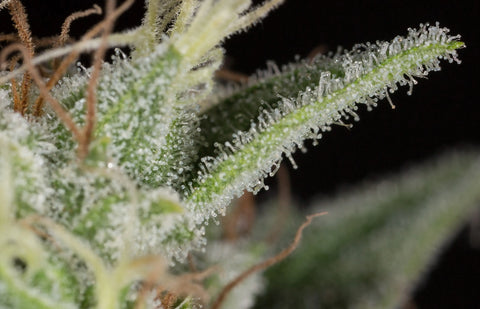
Downy mildew (Phytophthora infestans)
The late blight strain Phytophthora infestans acts as a fungal disease demonstrating almost the same characteristics as those of powdery mildew, with, however, some distinctive elements to which some consideration must be given to differentiate the two phenomena.
How to identify the presence of downy mildew?
We perceive the presence of a fungal disease such as downy mildew, at the level of the stem, the upper part of the leaves and the flowers, but not only, because unlike powdery mildew, we also observe its presence and development on the lower part of the leaves. The primary symptoms alerting the presence of a mildew attack are: small spots of a yellowish color has translucent on leaves, and it is also possible to observe the presence of a thin layer of white powder similar to that of powdery mildew. But be careful, because this last mentioned symptom does not necessarily appear when this disease occurs.
Treatment of Downy Mildew
In order to gradually reduce the action of mildew and with the aim of completely eliminating it in the short term, it is necessary to prune and throw away the various affected parts of the plants and quickly evacuate them to a recycling center, located at good distance from the place where you grow your crops. It is also important to avoid excessively densifying your plants within your space; on the contrary, you must promote good air renewal such as good ventilation in all parts of this growing habitat, to avoid the appearance of mildew.
An effective way to actively combat downy mildew is to use a treatment with a contact chemical fungicide such as Cymoxanil, Chlorothalonil or Imazalil. It is also possible to apply a systemic chemical fungicide such as Myclobutanil, Metalaxyl, Fosetyl-Al, Triadimenol, Tebuconazole, or even Bitertanol.
There Bordeaux mixture also constitutes an effective treatment against this pathogen. We recommend that you always carefully read the conditions of use, as well as the safety measures imposed by law, before any application of this type of phytosanitary product. If the progression of the disease is not stopped in time, it can easily lead to the arrival of harmful insects and a consequent loss of the total production of your cannabis plants at the same time.
Fusarium (oxysporum)
Fusarium is a cryptogamic disease, therefore belonging to a category bringing together a large group of filamentous fungi which develop in the soil or substrate. Fusarium is a saprophytic parasitic fungus, meaning it feeds on decaying residues of other organisms. Fusarium causes root rot and he also attacks the collar (lower part) of the stem of the plant.
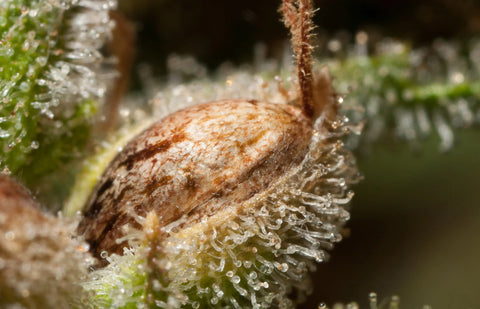
How to detect the presence of fusarium?
The main symptoms that we can observe during a fusarium attack are the presence of rot at the base of the stems, but also small necrotic spots on old leaves, such as those located on the lower part of the plant. It is also possible to see some leaves curl upwards, before observing a progressive yellowing of the latter, which will lead to their wilting and then their definitive death. We can also detect the presence of fusarium, using the stem lignification, a good tip to ensure with certainty that plants are indeed suffering from Fusarium wilt, is to make a cross section of the stem.
If you see that the latter has a color reddish brown inside, then you will have confirmation. In any case, we perceive that the plant’s immune system is weakened, because the plants have a generally degraded appearance. Depending on the stage of development of the plant, we will witness slowed growth, or flowering leading to a significant loss of final production of buds. This unfavorable situation could also lead to the presence of harmful insects at the same time.
Fusarium treatment
If you want to avoid any fusarium attack, you will need to maintain the substrate temperature below 29 C°, because fusarium appreciates acidic soil, with a hot and dry climate. Maintain perfect hygienic conditions as much as possible, because a clean space free of plant waste will prevent the arrival of this unwanted guest in your indoor garden. We recommend avoiding the use of fertilizers with too high a nitrogen concentration, however add all the necessary nutrients to the water in your nutrient solution to meet the needs of your cannabis plants.
You can also add between 20 and 30 cc of hydrogen peroxide to your nutrient solution at the rate of one application per week, because the latter contains hydrogen peroxide, which helps eradicate fusarium and improve the oxygenation of your substrate at the same time. It is also possible to add an antagonistic fungus such as Trichoderma Harzanium, which naturally fights and eliminates the harmful action of fusarium.
Remember to ventilate the lower part of your plants well to ensure a air mixing efficient throughout the space and avoid air pockets. Be sure to spray with organic fungicides such as horsetail or nettle decoctions before sowing your cannabis seeds.
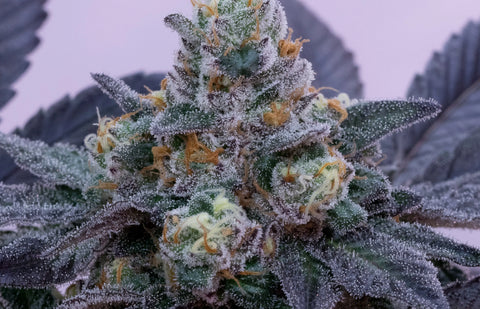
Alternaria
Alternaria is a cryptogamic disease which belongs to the Pleosporaceae family, which has at least 44 identified spaces. The main cause of its presence is characterized by the decomposition of organic matter. This explains why it ravages more than 20% of agricultural crops around the world. Alternaria can cause allergy or respiratory problems in humans (bronchial asthma, rhinitis, etc.). It appears that 10 to 15% of the Earth’s total population is affected by Alternaria.
How to identify the presence of Alternaria?
The signs of the appearance of a fungal disease such as Alternaria allow us to observe circular dry spots of a fairly dark gray color, or brown or black, on the leaves and even on the trunk cannabis plants. These tasks have a necrotic appearance, which will complicate photosynthesis, because the surface area for light capture by the leaves is reduced.
Alternaria causes a gradual slowdown in the development of the plant, considerably weakening its immune system. This generally gives the impression that the plants suffer from poor absorption of water and nutrients, because the physical appearance of each individual suggests a hypothetical state of deficiency in different minerals.
Treatment of Alternaria
To prevent the presence of Alternaria in your cannabis culture, it is fundamental to always keep your space as clean as possible, and above all avoid leaving organic matter to decompose (plant waste). It is necessary to ensure good, uniform ventilation of the space, to try to regulate stable climatic conditions, in limiting variations as much as possible (humidity and temperature).
Please water regularly, using the right amount water, fertilizer or nutrients necessary for the needs of your garden. Do not hesitate to apply preventive treatments using a broad-spectrum fungicide product. Last thing, make sure you never reuse a used substrate.
